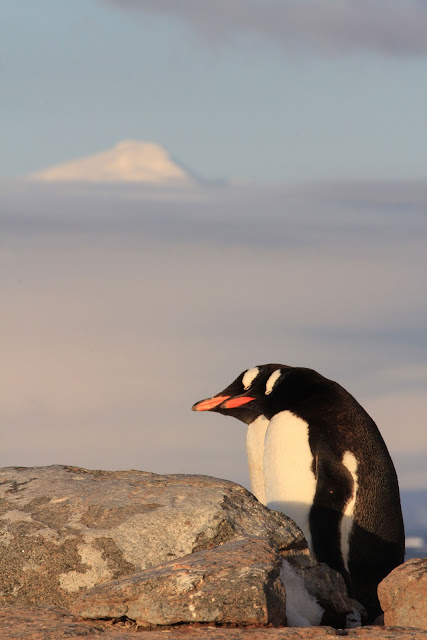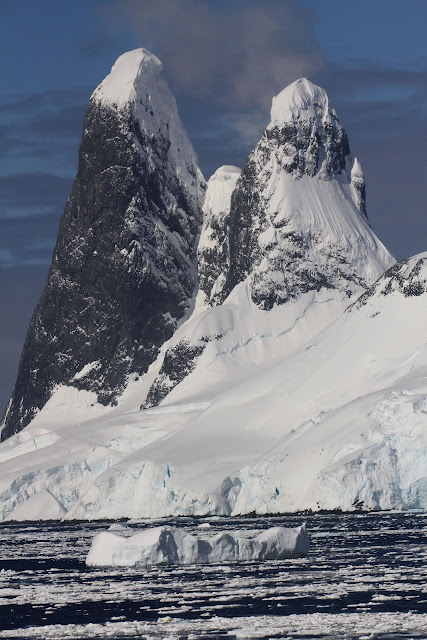What a perfect introduction to my new field site, Matiu/Somes Island in Wellington Harbor, at the southern end of the North Island. After a week of working with Jingjing Zhang, DOC (Department of Conservation) staff, and Penguin Project volunteers from Wellington, I’m so grateful to have landed at such an incredible field site, working with such dedicated, knowledgeable and friendly people. The week began as I imagine all of my field weeks will begin here in Wellington, with strong winds, clouds threatening rain (but rarely delivering on the threat), and a stop at a cafe for our last mocha of the week (for the rest of the work week it’s an endless string of tea breaks - ‘putting the kettle on for a cuppa’).
The ferry trip from Wellington to Matiu/Somes Island is a short 8 km. We hop off and go through the biosecurity check to make sure we haven’t inadvertently brought any mice, rats, Argentine ants or seeds from invasive species with us in our luggage. I could of course guarantee the first three species were not hitchhiking in my luggage, but I did have a careful check of my packed clothes and shoes for bits and pieces of plants. The island has been free of mammalian predators since the 80s and the native birds, reptiles and insects would appreciate it if it stayed that way, ensuring their survival.
 |
| A Little Blue Penguin returning to its nest at dusk |
 |
| Matiu (Maori name) / Somes (European name) Island |
 |
| The view of Wellington from the Education House, the wonderful place we stay on Matiu/Somes Island (and available for public rental from the Department of Conservation) |
After a hike uphill to the housing, we head out to the penguin colony and check each nestbox, looking for an adult Little Blue Penguin (
Eudyptula minor) with one or two small to medium sized chicks. It’s important to find nests with parents still in the guarding stage, where one parent is home with the chicks each day while the other parent is out fishing. Later in the breeding season, both parents spend their days out fishing and only come home at night to feed their chicks. Once the chicks are larger, they don’t need guarding from predators or warmth from the parents, but they are quite demanding for food. One of the penguin researchers described what his infrared camera recorded one night - a parent came home, fed the chicks quickly (within 5 minutes) and left the box, only to nap outside of the box for 3 hours before heading out to sea to collect more fish. The boxes can get very stinky and chicks can pester their parents, so I'm sure a little peace and quiet was just what that parent needed.
 |
| A Little Blue Penguin chick losing its warm down and growing in waterproof feathers. Notice that chicks have brighter blue feathers than the steel blue feathers of adults. |
 |
| The GPS receiver (larger, to the right) and the TDR (temperature-depth recorder, smaller, to the left), duct-taped on to the back of an adult Little Blue Penguin. |
Jingjing has been attaching GPS receivers to penguins to track their foraging behavior. On her previous trip to Matiu/Somes, the four penguins she tracked either foraged inside the harbor or went through the entrance, around Pencarrow Head, and foraged near the outflows of two rivers. On this trip and our subsequent trip, Jingjing attached 12 GPS receivers ($100 each) and six Temperature-Depth Recorders (TDRs - $1000 each) to penguins while I held them as steady as possible. Each penguin has its own personality - some were quite feisty while others were content to just sit quietly in my lap while Jingjing taped the transmitters on. She uses small strips of black duct tape (the many uses of duct tape - who knew this is one of them?!). The advantage of duct tape is that it’s easy to take off when they return to the nestbox and the transmitter will just fall off if we don’t retrieve the bird within 3 days, minimizing the impact on actively feeding adults.
 |
| Jingjing Zhang and Mike Rumble record the weight of a penguin in a pillowcase. The nestbox behind Mike is a secure, dry home with a stunning view atop the northern end of the island. |
 |
| Little bundles of joy. |
 |
| Wellington as viewed through a rock arch on North Point. |
We also help the Penguin Project volunteers record the activity and occupants of each nestbox in the north end study colonies, as well as capture and record the identification and weight of penguins returning to their nests just after dark. While walking back to our house after night work, we spotted an adult walking up the road near the top. It’s amazing to me how far (and up!) these penguins go to get to their nests after a long day of swimming. At the beginning of the breeding season, new breeders do some creative scouting for potential nest sites. One of the island’s rangers said she once had two Little Blues walk right into her house and head right for the bedroom. A nice, cozy place to raise a family. Some people here in New Zealand have penguins nesting under their houses, to varying levels of enthusiasm. They can be noisy and odorous so I’m sure some people consider them pests. For five summers while doing field work at Kent Island, New Brunswick, I lived in a boathouse with a semi-open lower level which housed several Barn Swallow nests - quite chatty in the pre-dawn hours. On most days I was happy to share the house with them and I miss the experience of living there.
 |
| Jingjing Zhang with a Giant Weta. |
 |
| The female Giant Weta is on top - her ovipositor is the long, pointy structure pointing to the left. The baitbox sometimes serves as a weta hotel. The peanut butter flavored block is visible at the end of the orange platform and the poison is the green block in the plastic bag. Without these boxes, the island could become infested with rodents again and native wildlife would disappear as their young were devoured. |
 |
| This medium-sized Brother's Island tuatara (Sphenodon guntheri) was reliably basking near the hiking trail on sunny days. I caught a quick glimpse of a large tuatara near one of the colony paths on an especially warm afternoon. Tuatara only exist on New Zealand's predator-free islands. I was very excited to see this unusual species with ancestors dating back some 200 million years. |
On one of our trips, we checked the bait boxes to make sure that mice and rats are still absent from the island. Each box has a small block of poison in a plastic bag and a peanut butter flavored block. We note the gnawing pattern on the peanut butter block - so far only weta. The poison is untouched and because it's in a thin plastic bag, it doesn't harm the weta or geckos that sometimes use the boxes as dry hotels. A mouse or rat would chew right through the bag and eat some of the poison, limiting the infestation. Because mice and rats eat ground-nesting birds' eggs and chicks, maintaining the island as predator-free is crucial to the existence of the native species, including insects, geckos, and the tuatara.
 |
| Gollum, fishing inside the Wellington airport. I joined the many travelers standing in the middle of pedestrian traffic to take pictures of this enormous sculpture. |
 |
| Wellington is the Middle of Middle Earth (and the site of the creative force behind the The Lord of the Rings movies and now, The Hobbit trilogy. Sir Peter Jackson himself makes an appearance in the Air New Zealand safety video. |
Traveling to Wellington has been fun this past month with the world premiere of The Hobbit in late November and the broad release today. The airport is all decked out with Hobbit icons and Air New Zealand has a great safety video that I watch attentively every time!
http://www.youtube.com/watch?v=cBlRbrB_Gnc


















































